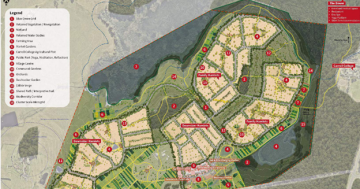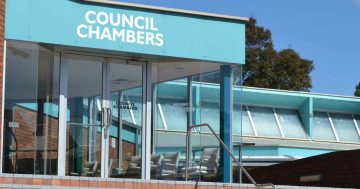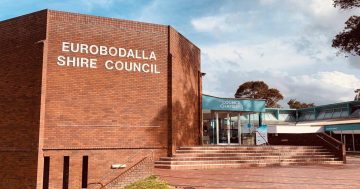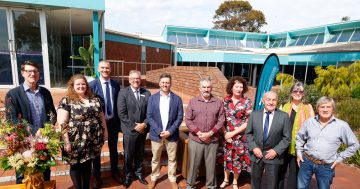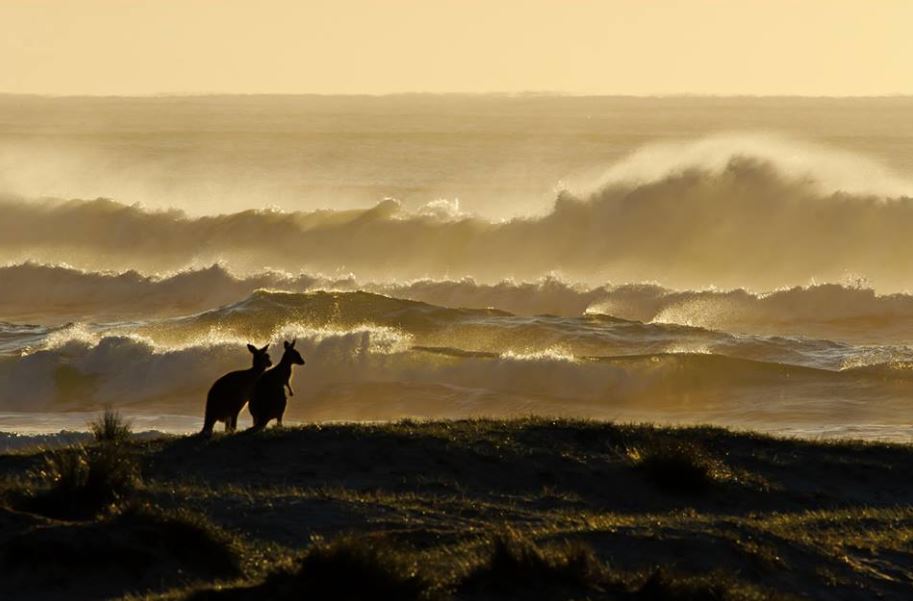
Kangaroos at dawn on the Eurobodalla coastline. Photo: Eurobodalla Tourism Facebook.
Eurobodalla Mayor Liz Innes, says she is proud to have worked with the community in developing the Rural Lands Strategy.
Yesterday’s (August 28) Council meeting to resolve the issue has been described as a marathon, which is perhaps fitting considering the plan has been on Council’s agenda for six years.
“What really hit me yesterday, listening to the speakers in support of this, I was blown away by the standard of people – vibrant people who are living on the land, these are the people I fight so very passionately for, ” Cr Innes says.
“To make sure that they get the support they need to be sustainable, to be productive, to grow the wonderful products they do, to diversify and be a vibrant part of our community.
“I am so delighted with the future of farming and productivity in Eurobodalla,” Cr Innes says.
The final vote on the associated planning rules that go with the Rural Lands Strategy, was seven to two, with Councillors Mayne and McGinaly voting against.
Council will now forward the planning proposal to the NSW Planning Minister for final sign off, which when in place will set out how rural land can be used in the shire.
Councilors heard 21 passionate presentations yesterday, both for and against the proposal.
“We care for the environment; we just want the opportunity to live on our rural property, so in turn we can be better custodians of our piece of land,” Narooma resident Cheryl Blessington told Council.
Ms Blessington says her family has farmed in the Narooma area for over 50 years, but she says her and her husband have been waiting since 2009 for permission to build on their 36-acre property.
“We too want this opportunity, to raise a family on our property; we are passionate about self-sustainability, we want to grow our own fruit and vegetables, to teach our children about rural values, how food is produced, to have a respect for nature and sustainability,” she says.
Cr Innes was elected to Council in 2012 on the strength of the issue, campaigning for an end to uncertainty for rural families and what she has described as over-regulation that would cripple the agricultural industry.
Speaking with a lump in her throat to About Regional, an emotional Mayor says she has popped champagne.
“Seeing the calibre of our farmers puts a fire in my belly, that’s why I stand up as strongly as I do,” Cr Innes says.
Over 500 submissions were received during the most recent round of consultation, with suggestions made that the Rural Lands Steering Committee was too heavily influenced by large landholders.
“We could not have gone through a more thorough process, all of the community had an opportunity to have their say, everyone has well and truly been heard,” Cr Innes says.
“I see no problem with a committee being made of people who are directly impacted, in fact, I think that that is a model that should be replicated.”
The end result will see the zoning of rural land throughout the shire updated and brought in line with a new NSW Government standard.
Council says, the strategy takes into account all relevant economic, social and environmental issues and recommends a modest increase in development, focused on growth in small-scale agriculture. Across the whole shire, Council says the strategy creates 122 additional lots and 247 potential additional dwellings, mostly infill developments on land already cleared.
A significant element of the local debate that has undermined people’s confidence in Council were the submissions received from State Government agencies like the NSW Office of Environment and Heritage (OEH), the Rural Fire Service, and NSW Fisheries.
The Director of Regional Operations for OEH, Michael Saxon wrote to Eurobodalla General Manager, Catherine Dale during the most recent round of consultation.
“The Office of Environment and Heritage has reviewed your latest planning proposal resulting from the Rural Lands Study,” Mr Saxon writes.
“Given that none of the changes that we suggested in our 2016 submission on this planning proposal have been adopted, we still retain a number of objections to the proposal.”
OEH objections relate to known threatened species habitat and the impacts clearing and incompatible land uses could have on species like the Swift Parrot, Greater Glider, Glossy Black Cockatoo, and Bangalay Sand Forest, as well as significant Aboriginal sites.
“Similarly, the high fire risk of many of these areas also has implications for biodiversity with the need for large clearing areas for asset protection. Its understood that the Rural Fire Service has raised similar concerns,” Mr Saxon writes.
Council’s Director of Planning and Sustainability Services, Lindsay Usher says, “It’s important to note that the State Government agencies who have lodged submissions have been involved in this process from the very start.”
“They’re not opposed to the strategy as such, but to certain elements of it that relate to their agencies. We considered their concerns at that time and we’ve reviewed them again and we continue to disagree with the issues they raise.”
Mr Usher says, any and all development proposals would still require the same rigorous development assessment in accordance with the relevant NSW Government environment, bushfire and clearing legislation and policies, as they are now.
He says the proposal does not increase the potential for clearing for agricultural activities in bushland and does not permit grazing on environmentally sensitive land, including on coastal wetlands.
“I am really upset and angry about the misinformation that has been a part of this discussion,” Cr Innes says.
“There is a sector in the community that are not interested in getting all the information and they use it as a tactic to spread fear.
“As long as I am Mayor I will stand to attention and call them to account.
“This whole idea of farmers and rural land owners not being able to be trusted makes me quite upset.”
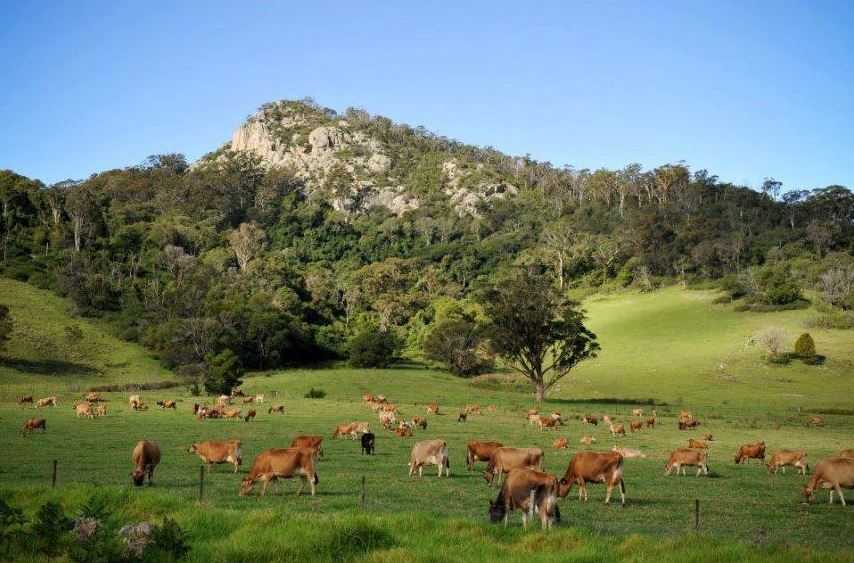
Tilba’s famous jersey cows grazing in the shadow of Najanuga (Little Dromedary). Photo: Eurobodalla Tourism Facebook.
Deputy Mayor, Anthony Mayne believes the volume and complexity of information connected to the Rural Lands Strategy has been a factor in the unease many have felt.
“This is a high-level planning document, you have to read over 2000 pages with maps and understand the language – its impossible,” Cr Mayne says.
“Council has put this out to the community and the community has come back on mass and said – we don’t understand this and why aren’t you listening to State Government agencies?”
At Council’s meeting earlier this month, Councilors Mayne and McGilay tried to move a motion that the process be delayed while more information was provided to the community. They had asked that Council invite the various State agencies who had made submissions to give public presentations.
Like yesterday’s vote, that motion was lost 7-2.
“Its part of a larger pattern of behaviour were taxpayer-funded scientific advice is ignored,” Cr Mayne says.
“Yesterday was democracy in action, it was wonderful to hear from the community, but I don’t think we have got the balance right.”
Council will now send all 538 submissions received from the community to the NSW Planning Minister for his consideration before making amendments to the Local Environment Plan.








